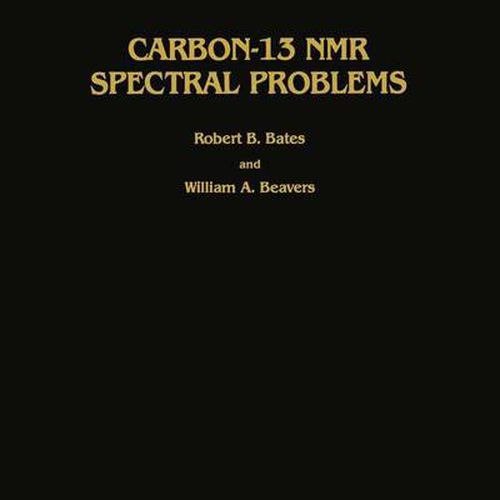Readings Newsletter
Become a Readings Member to make your shopping experience even easier.
Sign in or sign up for free!
You’re not far away from qualifying for FREE standard shipping within Australia
You’ve qualified for FREE standard shipping within Australia
The cart is loading…






With the advent of Fourier transform spectrometers of great sensitivity, it has become practical to obtain carbon-13 nuclear magnetic resonance (C-13 NMR; l3C NMR; CMR) spectra routinely on organic molecules, and this technique has become one of the highest utility in determining structures of organic unknowns. When the usual spectrometric techniques proton magnetic resonance (H-I NMR; IH NMR; PMR), infrared (lR), mass (MS), and ultraviolet (UV)-do not readily reveal a compound’s structure, a C-13 NMR spectrum will often provide sufficient additional information to yield it unequivocally. With this in mind, the present work was designed to give advanced undergraduates, graduate students, and practicing chemists a working knowledge of and facility with the use of this valuable technique. Some familiarity with other spectrometric techniques is assumed (recommended book: Silverstein, Bassler, and Morrill, Spectrometric Identification of Organic Compounds), but no prior knowledge of C-13 NMR -which is treated very lightly, if at all, in the widely used elementary organic texts-is necessary. A discussion of C-13 NMR spectroscopy is followed by 125 problems, each consisting of a molecular formula, two types of C-13 NMR spectra (partially and completely proton decoupled, with connecting lines to facilitate multiplicity assignments), an integrated H-I NMR spectrum, and the most important IR, UV, and MS data. These problems have been very carefully prepared, thoroughly tested by students at the University of Arizona, and we believe that very few errors remain.
$9.00 standard shipping within Australia
FREE standard shipping within Australia for orders over $100.00
Express & International shipping calculated at checkout
With the advent of Fourier transform spectrometers of great sensitivity, it has become practical to obtain carbon-13 nuclear magnetic resonance (C-13 NMR; l3C NMR; CMR) spectra routinely on organic molecules, and this technique has become one of the highest utility in determining structures of organic unknowns. When the usual spectrometric techniques proton magnetic resonance (H-I NMR; IH NMR; PMR), infrared (lR), mass (MS), and ultraviolet (UV)-do not readily reveal a compound’s structure, a C-13 NMR spectrum will often provide sufficient additional information to yield it unequivocally. With this in mind, the present work was designed to give advanced undergraduates, graduate students, and practicing chemists a working knowledge of and facility with the use of this valuable technique. Some familiarity with other spectrometric techniques is assumed (recommended book: Silverstein, Bassler, and Morrill, Spectrometric Identification of Organic Compounds), but no prior knowledge of C-13 NMR -which is treated very lightly, if at all, in the widely used elementary organic texts-is necessary. A discussion of C-13 NMR spectroscopy is followed by 125 problems, each consisting of a molecular formula, two types of C-13 NMR spectra (partially and completely proton decoupled, with connecting lines to facilitate multiplicity assignments), an integrated H-I NMR spectrum, and the most important IR, UV, and MS data. These problems have been very carefully prepared, thoroughly tested by students at the University of Arizona, and we believe that very few errors remain.